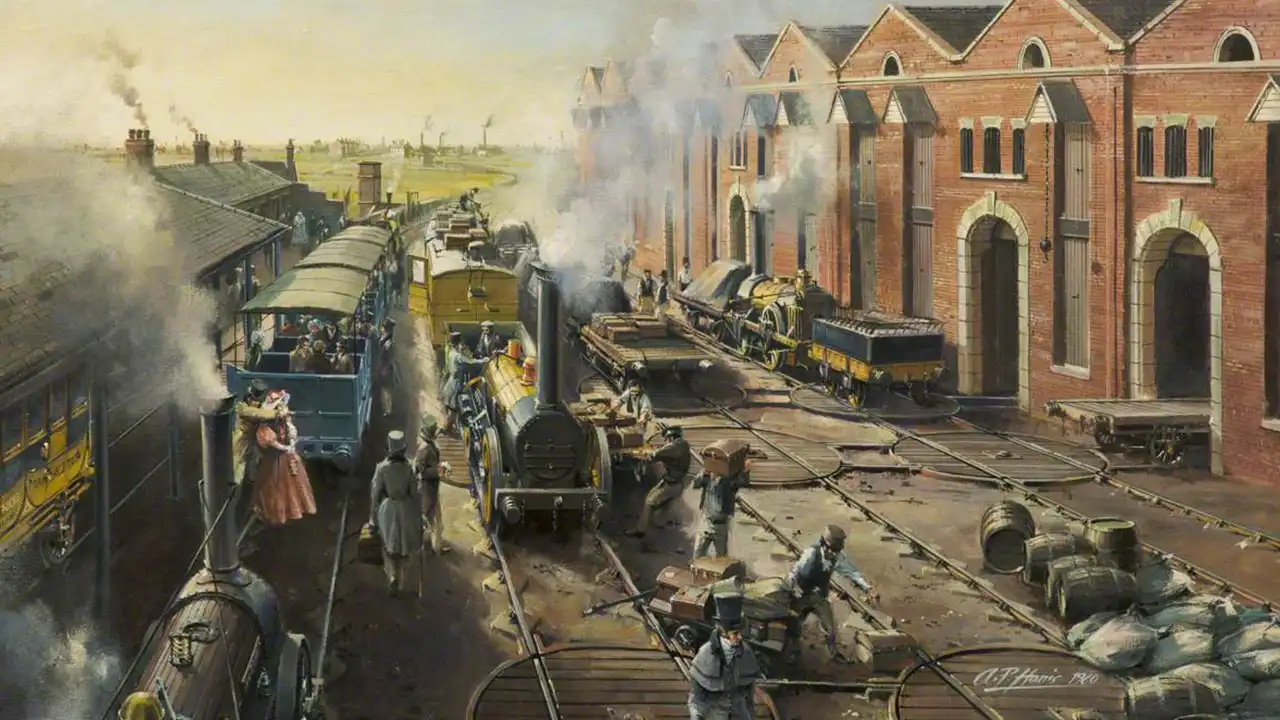Trains have revolutionized modern travel, trade, and society. But what do you know about which is the world’s first railway station? To find out, we have to take a journey back in time to early 19th-century England, where the idea of organized rail travel first evolved.
The Origin of Rail Travel: Manchester’s Pride
The world’s first railway station is generally attributed to The Mount on the Oystermouth Railway (subsequently known as the Swansea and Mumbles Railway) in Wales, which opened for business in 1807. But it was a horse-drawn passenger railway, not steam-powered.
But as far as the first steam-powered passenger railroad station is concerned, the credit goes to Liverpool Road Station in Manchester, England, which was opened in 1830.
Liverpool Road Station – The First of Its Kind
Opened: September 15, 1830
Location: Manchester, United Kingdom
Line: Liverpool and Manchester Railway (L&MR)
Liverpool Road Station was the first railway station to be built specifically for passenger trains, a revolutionary jump in transportation. It was built as a terminus for the world’s first inter-city railway line and operated regular passenger services between Liverpool and Manchester. It was revolutionary because it utilized steam locomotives
What Made It So Special
Prior to 1830, railways were employed primarily in transporting industrial materials and coal. Liverpool Road Station revolutionized everything. It brought in:
Timetabled passenger services
Specialized platforms and ticketing offices
Platform shelters for commuters
Employment of steam-powered engines
This station formed the basis for the modern railway system we enjoy today.
Historic Significance Today
Liverpool Road Station is no longer an operational station today, the museum exists as part of the Manchester Science and Industry Museum. The station serves as a testament to the Industrial Revolution and the development of mass transportation.
The old locomotives, railway equipment, can be toured by visitors and learn how this small station was the catalyst for a global transportation system.
Other Early Railway Stations Worth Mentioning
Although Liverpool Road Station is officially designated as the first of its type, other stations from the early years were also significant to railway history:
Stockton & Darlington Railway (England, 1825): Billed as a global first public railway, but operated using a mixture of steam and horse-drawn wagons.
Mount Clare Station (Baltimore, USA, 1829): The United States’ oldest surviving station.
London Bridge Station (1836): The oldest operating railway terminus in London.
Why Visit Historical Railway Stations
- Exploring old railway stations is like stepping into a time machine. These sites offer:
- Architectural beauty from the early industrial era
- Interactive museums showcasing the history of rail transport
- Educational experiences for kids and adults alike
- A deeper appreciation for how far we’ve come in travel and technology
Plan Your Visit to Liverpool Road Station (Science and Industry Museum)
Location: Liverpool Road, Manchester M3 4FP, UK
Entry: Free (particular exhibitions can be ticketed)
Best Time to Visit: All year round
Nearby Attractions: Manchester Cathedral, Castlefield Urban Heritage Park
So, what is the world’s first railway station? The answer is Liverpool Road Station, the cradle of organized steam-operated passenger rail service. A trip to this legendary place is not merely for train enthusiasts or history aficionados—it’s an adventure into how humanity transitioned from horse-drawn carts to high-speed trains.
In an ever-moving world, it is heartening to reflect back on where it all started.







